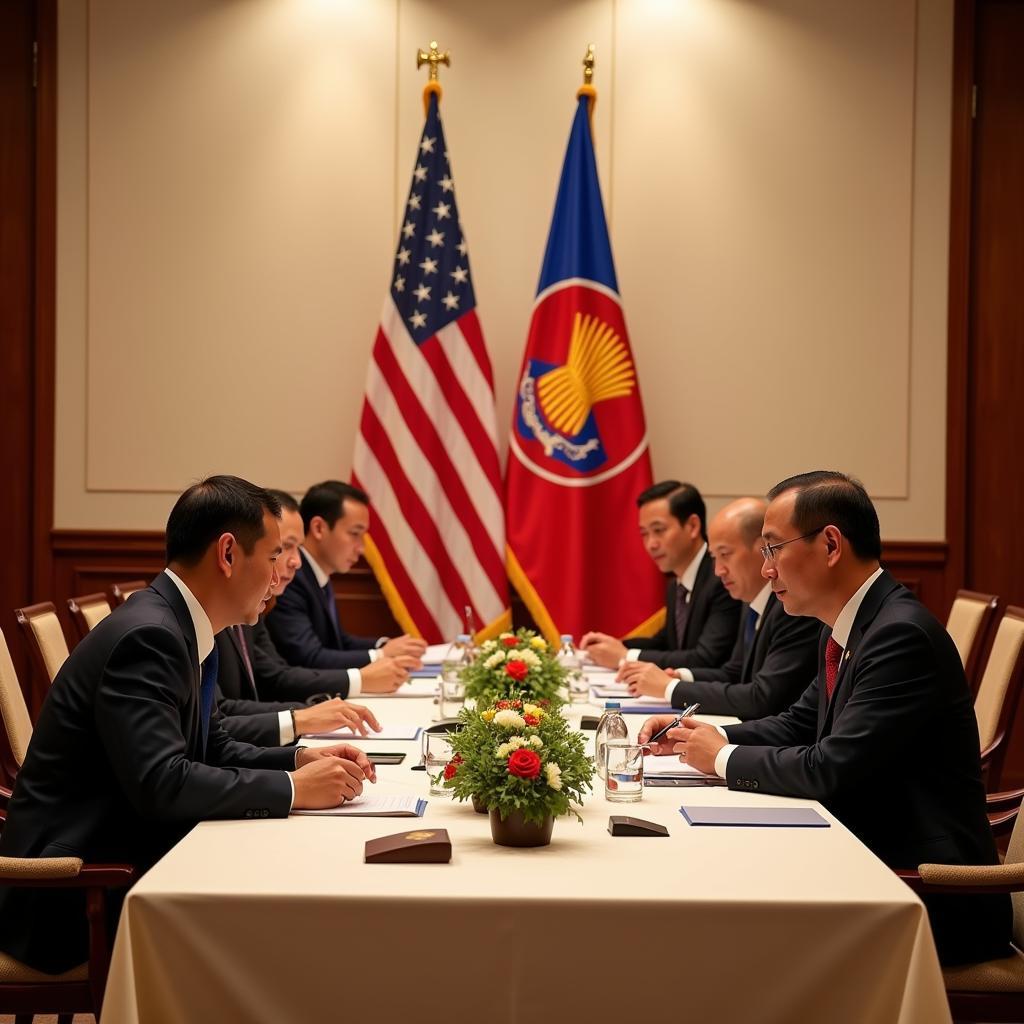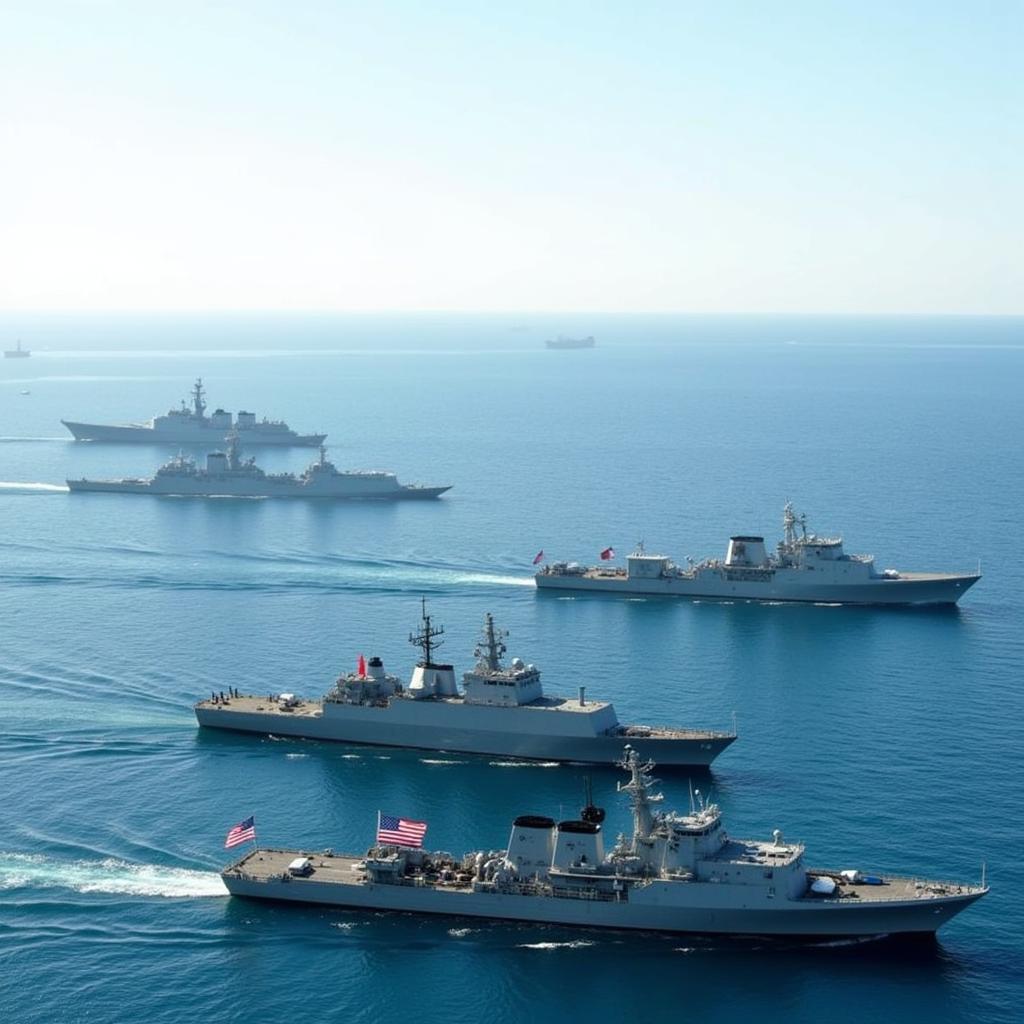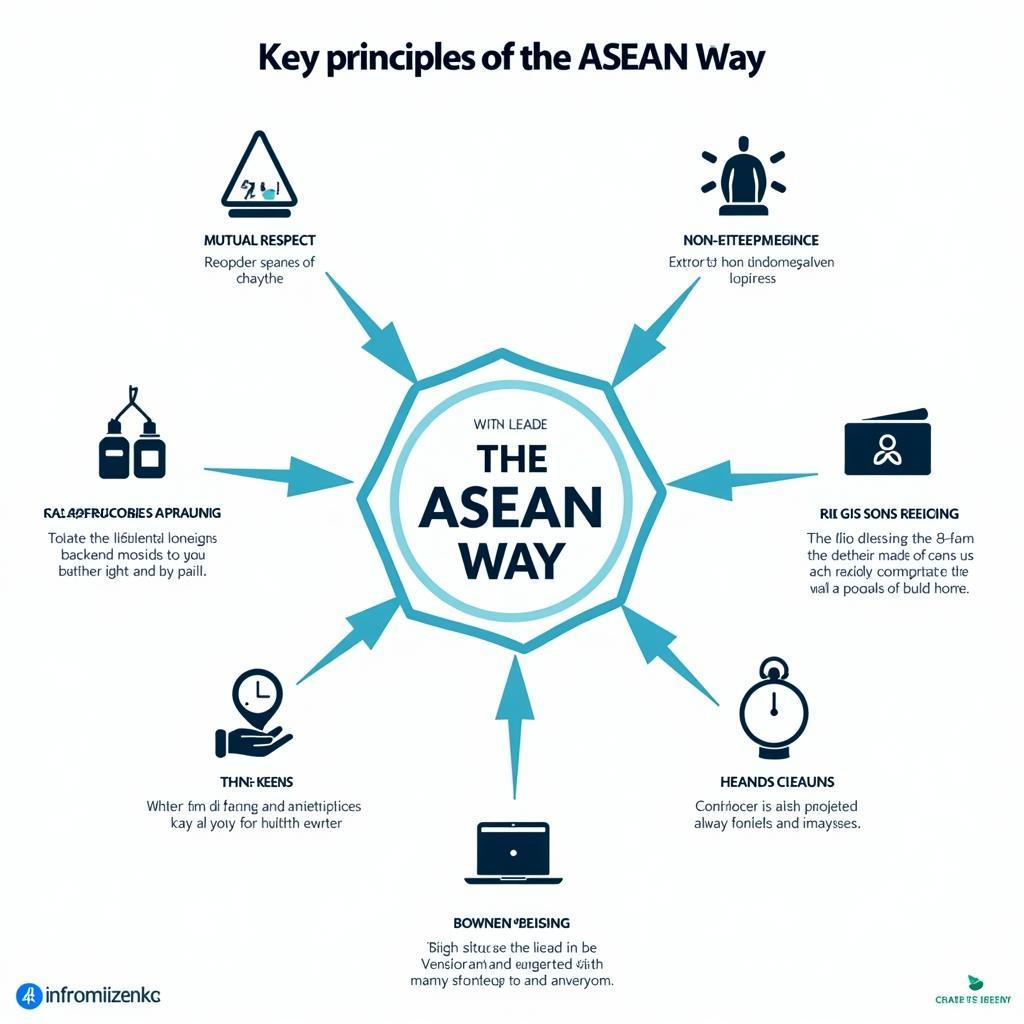The relationship between ASEAN and the United States has gained significant traction in recent years, evolving into a multifaceted partnership with implications for regional and global dynamics. This burgeoning alliance is driven by shared interests, including economic cooperation, security collaboration, and promoting a free and open Indo-Pacific region.
 ASEAN-US Summit
ASEAN-US Summit
Economic Interdependence: A Cornerstone of ASEAN-US Ties
The US recognizes the immense economic potential of the ASEAN region, a dynamic market with a burgeoning middle class and a rapidly growing digital economy. ASEAN, in turn, benefits from US investments, technological expertise, and access to the vast American market. This symbiotic relationship has fostered trade partnerships, infrastructure development projects, and innovation initiatives.
For instance, the US-ASEAN Trade and Investment Framework Arrangement (TIFA) provides a platform for dialogue and collaboration on trade and investment issues, facilitating greater economic integration. Moreover, the US International Development Finance Corporation (DFC) actively invests in key sectors within ASEAN, including energy, infrastructure, and healthcare, further solidifying economic ties.
Navigating Security Challenges Together
Beyond economics, security cooperation forms another crucial pillar of the ASEAN-US partnership. The rise of non-traditional security threats, such as terrorism, cybersecurity, and maritime disputes, necessitates a collective response. Both ASEAN and the US acknowledge the importance of maintaining peace and stability in the Indo-Pacific region, a shared interest that has led to joint military exercises, intelligence sharing, and capacity-building programs.
 ASEAN-US Maritime Exercise
ASEAN-US Maritime Exercise
The annual ASEAN Regional Forum (ARF), where the US is an active participant, serves as a vital platform for dialogue and cooperation on regional security issues. Furthermore, the US supports ASEAN’s centrality in regional architecture, recognizing the organization’s role in promoting dialogue and conflict resolution.
Promoting a Free and Open Indo-Pacific
The concept of a free and open Indo-Pacific, championed by both ASEAN and the US, underscores their shared vision for the region. This vision emphasizes principles such as respect for international law, freedom of navigation and overflight, and peaceful resolution of disputes.
The US’s Indo-Pacific Strategy aligns with ASEAN’s Outlook on the Indo-Pacific, highlighting the convergence of interests in promoting economic prosperity, good governance, and regional stability. Through collaborative initiatives, such as the Blue Economy Partnership and the Digital Connectivity Partnership, ASEAN and the US aim to foster sustainable development and enhance connectivity throughout the Indo-Pacific.
A Future of Enhanced Cooperation
The ASEAN-US relationship, while robust, continues to evolve in the face of emerging challenges and opportunities. Both sides recognize the importance of strengthening people-to-people ties through educational exchanges, cultural programs, and tourism initiatives. Furthermore, addressing transnational issues such as climate change, pandemics, and supply chain resilience will require deeper collaboration and coordination.
 ASEAN-US Cultural Exchange
ASEAN-US Cultural Exchange
As the ASEAN-US partnership matures, it holds the potential to shape the regional and global landscape significantly. By leveraging shared interests, fostering dialogue, and embracing a cooperative approach, ASEAN and the US can effectively address common challenges and unlock new avenues for mutual benefit and prosperity.
Conclusion
The burgeoning relationship between ASEAN and the US reflects a shared commitment to economic prosperity, security cooperation, and a free and open Indo-Pacific. As both partners navigate a complex geopolitical landscape, their collaboration will be crucial in shaping a stable and prosperous future for the region and beyond.


